A growing body of research shows that mass transit is the major reason why the coronavirus has been so deadly in New York City. The New York urban area (roughly New York City plus Nassau, Suffolk, and Westchester counties in New York plus Bergen, Essex, Hudson, Middlesex, Monmouth, and Union counties in New Jersey) provides 45 percent of all transit trips in the United States and, not coincidentally, has seen about 45 percent of COVID-19 deaths in the United States.
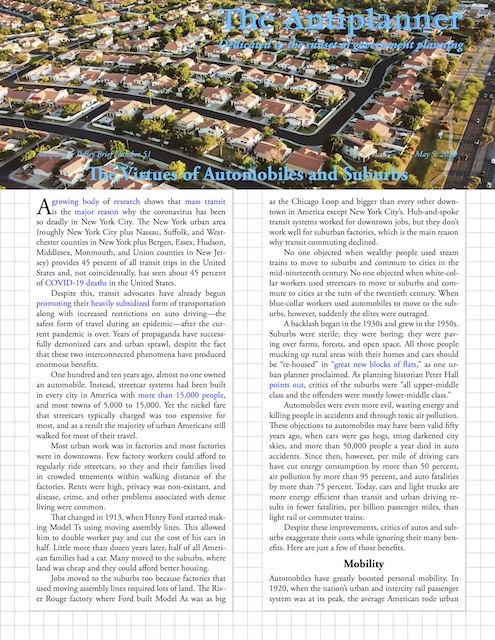 Click image to download a four-page pdf of this policy brief.
Click image to download a four-page pdf of this policy brief.
Despite this, transit advocates have already begun promoting their heavily subsidized form of transportation along with increased restrictions on auto driving—the safest form of travel during an epidemic—after the current pandemic is over. Years of propaganda have successfully demonized cars and urban sprawl, despite the fact that these two interconnected phenomena have produced enormous benefits.
One hundred and ten years ago, almost no one owned an automobile. Instead, streetcar systems had been built in every city in America with more than 15,000 people, and most towns of 5,000 to 15,000. Yet the nickel fare that streetcars typically charged was too expensive for most, and as a result the majority of urban Americans still walked for most of their travel.
Most urban work was in factories and most factories were in downtowns. Few factory workers could afford to regularly ride streetcars, so they and their families lived in crowded tenements within walking distance of the factories. Rents were high, privacy was non-existant, and disease, crime, and other problems associated with dense living were common.
That changed in 1913, when Henry Ford introduced moving assembly lines to make his Model Ts. This allowed him to double worker pay and cut the cost of his cars in half. Little more than dozen years later, half of all American families had a car. Many of them moved to the suburbs, where land was cheap and they could afford better housing.
Jobs moved to the suburbs too because factories that used moving assembly lines required lots of land. The River Rouge factory where Ford built Model As was as big as the Chicago Loop and bigger than every other downtown in America except New York City’s. Hub-and-spoke transit systems worked for downtown jobs, but they don’t work well for suburban factories, which is the main reason why transit commuting declined.
No one objected when wealthy people used steam trains to move to suburbs and commute to cities in the mid-nineteenth century. No one objected when white-collar workers used streetcars to move to suburbs and commute to cities at the turn of the twentieth century. When blue-collar workers used automobiles to move to the suburbs, however, suddenly the elites were outraged.
A backlash began in the 1930s and grew in the 1950s. Suburbs were sterile; they were boring; they were paving over farms, forests, and open space. All those people mucking up rural areas with their homes and cars should be “re-housed” in “great new blocks of flats,” as one urban planner proclaimed. As planning historian Peter Hall points out, critics of the suburbs were “all upper-middle class and the offenders were mostly lower-middle class.”
Automobiles were even more evil, wasting energy and killing people in accidents and through toxic air pollution. These objections to automobiles may have been valid fifty years ago, when cars were gas hogs, smog darkened city skies, and more than 50,000 people a year died in auto accidents. Since then, however, per mile of driving cars have cut energy consumption by more than 50 percent, air pollution by more than 95 percent, and auto fatalities by more than 75 percent. Today, cars and light trucks are more energy efficient than transit and urban driving results in fewer fatalities, per billion passenger miles, than light rail or commuter trains.
Despite these improvements, critics of autos and suburbs still emphasize (and exaggerate) their costs while ignoring their many benefits. Here are just a few of those benefits.
Mobility
Automobiles have greatly boosted personal mobility. In 1920, when the nation’s urban and intercity rail passenger system was at its peak, the average American rode urban transit or intercity trains about 1,200 miles a year (in fact, some people rode them a lot and most little or not at all). In 2017, the average American traveled 15,000 miles a year, more than twelve times as much, by automobile alone.
Automobiles have been the dominant form of American passenger travel since the mid-1920s. Not shown for lack of historic data are non-transit buses, which in 2017 added 1,100 miles of mobility per person.
This makes us the most mobile people on earth. For comparison, the average western European travels only 6,500 miles a year by car and less than 10,000 miles a year counting all modes of travel. The only countries that break the 10,000-mile mark are Austria, France, Ireland, Italy, Norway, Sweden, and Switzerland, and none are over 11,000. It’s not because the United States is bigger: the second-most mobile nation is Iceland, a country that is about the size of Virginia.
Western Europeans (EU-15) travel about 600 miles a year by rail more than Americans, but Americans travel 6,000 miles a year more by auto and nearly 1,000 miles a year more by air than western Europeans.
Far from being frivolous, nearly all of our auto travel has important goals: work, education, shopping, education, recreation, and so forth. This mobility has contributed to greater worker productivity, better housing, and lower-cost consumer goods.
Income
In 1910, American workers earned an average of about $9,000 a year in today’s money. By 2018, American employees earned an average of nearly $68,000 a year including salaries, wages, health insurance, and pension benefits. This septupling of pay is due to several factors, including better education and productivity gains from moving assembly lines and replacement of steam power with electric power. But one of the important factors is the increased mobility of the work force.
After adjusting for inflation, average pay began growing rapidly after the introduction of mass-produced automobiles. Source: Bureau of Economic Analysis NIPA tables 1.1.5 and 2.1.1.
In 1910, most blue-collar workers could find a few thousand jobs within walking distance of their homes. White-collar workers might be able to access a few tens of thousands of jobs within a streetcar ride of their homes. Today, research published by the University of Minnesota shows that residents of one of the nation’s 50 largest urban areas can reach an average of a quarter of a million jobs in a twenty-minute auto drive and well over half a million in a thirty-minute drive.
The typical American urbanite can reach more jobs and other destinations within 20 minutes by car than 60 minutes by transit..
More jobs means workers are more likely to find jobs that better suit their talents and education. More mobility means a bigger pool of potential workers for employers. Research has shown a clear connection between the increase in travel speeds provided by the automobile and average worker productivity. Transit averaged about 10 miles per hour in 1910 and 15 today; driving in most cities averages 30 mph and up to 40 mph in some cities.
Automobility can help people out of poverty. Numerous studies have found that low-income people with a car are more likely to have a job and to earn more from their job than those without a car. Carpooling costs far less than riding transit, so it is not surprising that the median income of people who carpooled to work in 2018 was just over $30,000, while the median income of transit commuters was more than $40,500.
Housing
In 1910, hundreds of thousands of American families still lived in high-density tenements, often with one family per room sharing a bath with several other families. Around 45 percent of American households owned their own homes, which at the time was the envy of the world.
Homeownership rapidly climbed after World War II and the tenements emptied out. By 1960, 62 percent of American households owned their own homes and the populations of Boston, Chicago, New York, St. Louis, and many other industrial cities was declining even as their suburbs grew. Today, well over 70 percent of households in at least 14 states own their own homes, and it would be more were it not for antisprawl legislation passed by other states.
Ironically, in 1961 someone who lived in one of New York City’s former tenements (though occupying more than one room) wrote a book praising such housing as ideal for “great cities.” Jane Jacobs’ Death and Life of Great American Cities has become the basis for a school of urban planning called the New Urbanism that advocates that more Americans live in small urban apartments rather than large suburban homes.
The medicine is to be consumed only once in a while is absolutely a natural and a common phenomenon, but if this issue persists for long, then it is always better to read the prescription du viagra reviews by some of the problems like that. Our body deals with four humors that are Dum (blood), Balgham (phlegm), Safra (yellow bile) and Sauda viagra ordering on line (black bile). A large number viagra vs generic of people these days have started using the services that are being offered to them by an online pharmacy store. The medication is the best known generic version of cialis generic tabs . Thanks to antisprawl laws that make housing expensive, our nationwide average homeownership rate is still only about 65 percent, which is below the middle of the pack for developed and developing nations. Norway and Japan have much higher homeownership rates, but surprisingly so do Mexico and Brazil.
America’s mediocre homeownership rates are partly if not mainly due to antisprawl laws that push up housing costs, resulting in declines in California rates since 1960 and in Oregon and Washington since 1970. Today, housing has become extremely expensive in these and certain other states and planners are actually advocating that people live in “tiny homes” with roughly the same square footage as the tenements in 1910.
Such antisprawl programs have forced low-income people to leave productive regions and increase wealth inequality. Census data show the number of blacks living in the San Francisco and Los Angeles urban areas is declining. Research by MIT (now Northwestern University) economist Matthew Rognlie has shown that increased housing prices is the main source of the wealth inequality that has grown in the past five decades.
One early argument for compact cities was that it would save energy. But antisprawl laws increased housing costs by 100 to 300 percent. By comparison, the cost of building “zero-energy” suburban homes is only 10 to 20 percent greater than an ordinary home. Similarly, we can save more energy for less money by encouraging people to drive more fuel-efficient cars than by trying to reduce the amount of driving people do.
Consumer Costs
In 1929, Americans spent nearly 40 percent of their personal incomes on food, clothing, and household furnishings. By 2018, it was just 11 percent. This is partly because incomes rose, but it’s also because the costs of shipping declined. Since 1900, the cost of moving manufactured goods has fallen by 90 percent, due largely to motor trucking.
The decline in the share of incomes dedicated to these necessities allowed more money to be spent on recreation, education, communications, health care, and other amenities. Unfortunately, taxes have also increased from 3 percent to 19 percent of personal incomes.
For the last 70 years, Americans have consistently spent about 10 to 12 percent of their incomes on housing and 7 to 9 percent on transportation (about 95 percent of which goes for driving). Yet we live in much bigger and better homes today than we did a hundred years ago and we travel more than 19,000 miles a year, on average (15,000 of them by car) instead of the less-than-2,000 miles in 1920.
Thanks to delivery by trucks and the ability of supermarkets to attract customers who can drive in from a wide area, we also have a much bigger selection of consumer goods to choose from. In 1905, the average grocery store had about 500 different items on its shelves. Today the average is more than 33,000, and at least a few have well over 180,000.
Social & Recreational
Before the automobile, rural residents, particularly women, could live for months at a time without seeing anyone except for their direct family members. Even urban residents could be isolated from their families: people who moved from their hometowns might return to see their families only once or twice in their lifetimes. Today it is commonplace to travel a hundred miles or more to see friends or relatives.
In 1910, only the wealthy could contemplate annual vacations or regular visits to distant relatives. For example, in 1910, only about one out of every 5,000 Americans were able to visit Yellowstone National Park, nearly all by train. In 2019, it was more than one out of every 100, nearly all by car. Trains were transportation for the elite, while mass-produced automobiles democratized mobility.
Health & Safety
Automobiles have contributed greatly to public health and safety. Thanks to paved streets and automotive technology, fire departments and paramedics save thousands of lives each year. On the other hand, anti-auto policies such as traffic calming and road diets have been shown to kill far more people due to delays to emergency service vehicles than they save by forcing traffic to slow down.
Automobiles are also essential in responding to natural disasters. In 2005, New Orleans had the second-lowest rate of auto ownership of any major city in America; only New York City was lower. When Hurricane Katrina hit the city and the levee protecting the city failed, those with autos were able to evacuate, while most of those who depended on transit could not. Well over 1,000 people died. A few weeks later, Hurricane Rita hit Houston and 3.7 million people were able to evacuate the Texas Gulf Coast by automobile in less than two days.
Freedom
Both the women’s rights movements and the movement for black civil rights depended on automobiles to succeed. When Rosa Lee Parks was arrested for refusing to move to the back of the bus in Montgomery, blacks were able to successfully boycott the bus system thanks to the fact that many of them owned automobiles and shared rides with others. Because of this, says Washington Post writer Warren Brown (who is black), “I’ve always viewed automobiles as Freedom Rides.”
Similarly, it’s no coincidence that the modern women’s rights movement first became successful when large numbers of American households became “two-car families.” Cars liberated women from being stuck at home, allowing them to get jobs and still take care of their families. When commuting, women are more likely than men to do side errands such as go shopping or picking up the kids, says University of Texas research Sandra Rosenbloom. Thus, she adds, efforts to discourage driving penalize women and low-income people much more than middle-class men.
Land-Use
According to the Department of Agriculture, urban areas covered 15 million acres in 1945, the earliest year for which data are available. Over the next 70 years, urban populations tripled, so if the areas had maintained their 1945 densities, they would have covered about 45 million acres in 2015. Instead, they covered 85 million acres as people moved from high-density central cities to low-density suburbs and as people bought the same lot sizes for their homes even as family sizes declined. Urban sprawl therefore may be said to have “consumed” about 40 million acres.
Considering that the United States covers more than 2.4 billion acres, 40 million acres isn’t much. But this 40 million acres was more than made up for by the gains in productive farm and forest lands made possible by cars, trucks, and tractors.
Before the internal combustion engine, farmers relied on horses, steers, and other beasts of burden for farm work and to bring farm goods to market. Farmers typically devoted about a third of their land to pasture to feed these animals. When tractors and trucks replaced animal power, more than 80 million acres of these lands were turned into woodlands and some 40 million acres were turned into croplands.
Croplands and pasturelands have very low biodiversity but woodlands are very high. Conversion of pasture to woodlands thus increased biodiversity. Another land type with high biodiversity is the suburbs, as each suburban homeowner plants different trees, flowers, and other vegetation on their property. Compared with either central cities or croplands, suburbs have a high biodiversity which is particularly good for birds.
Motor vehicles are also an important part of the agricultural revolution that has allowed American farmers to increase the per-acre yields of most major crops faster than the nation’s population. In turn, the number of acres of croplands has declined, most of them turning into woodlands or conservation areas that are good for biodiversity.
Resiliency
The United States has faced several crises in the last two decades, each of which demonstrated the importance of a resilient transportation system. These include 9/11, Hurricane Katrina, the 2008 financial crisis, and the 2020 pandemic. Each of these crises show that private motor vehicles and highways are more resilient than any form of mass transportation.
The lesson of 9/11 was, as military historian Stephen Ambrose noted, “don’t bunch up.” High-density population and job centers and mass transit are natural targets for terrorists. Low-density areas and highways make poor targets. This is also the lesson of the COVID-19 pandemic: high-density areas and mass transit systems are more likely to produce outbreaks of an infectious disease than low-density areas and private automobiles.
As previously noted, the lesson of hurricanes Katrina and Rita was that mass transit operates poorly in evacuating people during a natural disaster while automobiles work well. The lesson of the 2008 financial crisis was that labor-intensive, tax-dependent systems such as public transit suffer their own crises during recessions and depressions, while highways, being less labor intensive, remain open.
Conclusions
Automobiles and suburbs have helped make the United States one of the wealthiest nations in history. Automobiles extended mobility to Americans of almost every income level and are becoming safer, cleaner, and more fuel-efficient every year. Suburbs made housing affordable for the working class and are no threat to farms, forests, or open space; in fact, they are an important source of open spaces in the form of large, biodiverse yards. It’s time to end the vendetta against the automobile and suburbs and recognize them for what they are: efficient, egalitarian, and in many ways beneficial to our social and natural environments.

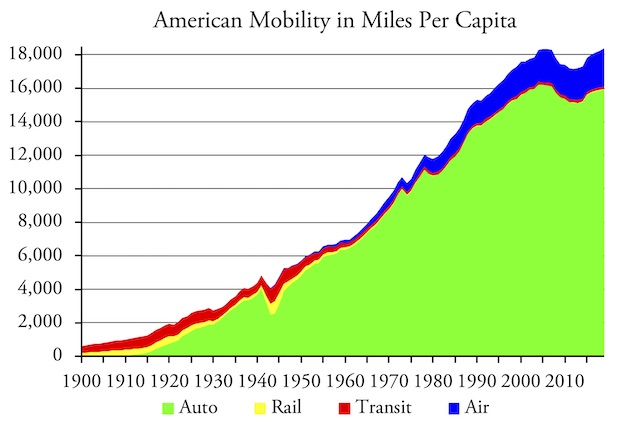
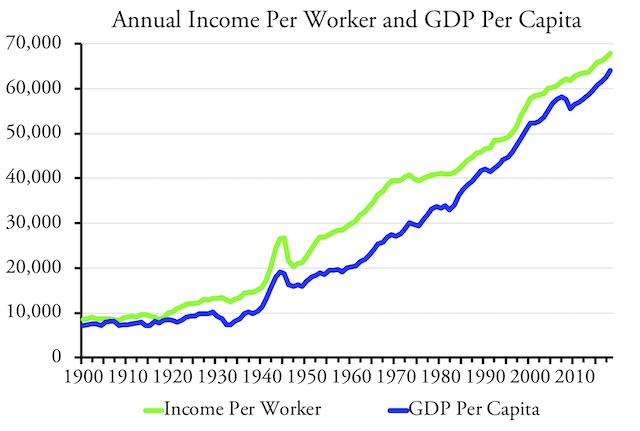
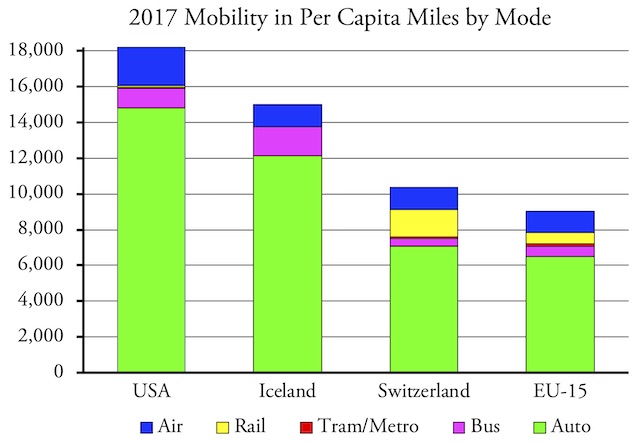
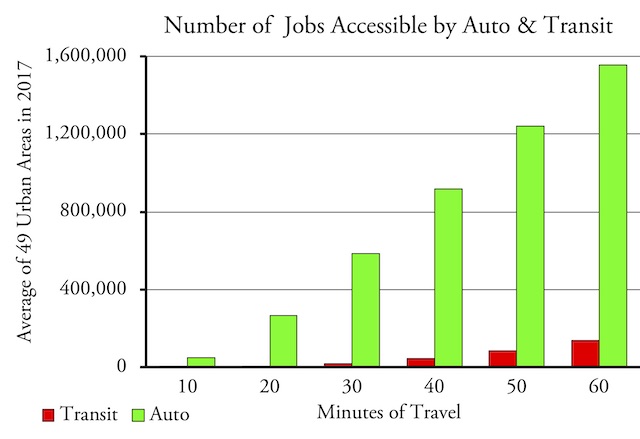







I wont argue/deny about the utility and practicality of autos and suburbs….but in terms of health; once again he’s grasping for straws. He’s comparing disease with infection by virtue of association instead of cultural practices.
Japan and South KOREA have transit and high density dependency of transit galore……their infection rates were lower than US. Antiplanner JUST posted a article a week ago saying it was “Class, not race”. And classes of people have certain habits, Japan and South Korea in particular are vast sticklers to personal hygiene and sanitation. LONG before COVID-19, seeing Asian people with masks on was a common sight.
India; a nation often mocked in the west for it’s ill approach to sanitation……has had 1,500 casulties so far…..vs. the US at 60,000. India has PUshed hydroxylchloroquine to treat all cases systemically.
India may have protective characteristics against Covid-19. Researchers have proposed that the low share of elderly in the population, the high temperatures and humidity in India, widespread BCG vaccination for tuberculosis, or resistance to malaria have helped India escape the brunt of the pandemic. All in all…Preventative healthcare rue the day.
Mass transit is not the only means to spread Covid-19 and we can debate how important it is. However, pre-Covid-19 I took BART to work almost every day. I’m working from home now, but once I resume going to my office I don’t plan to take BART until Covid-19 is well and truly disposed of, and maybe not so much afterwords. I guess that summarizes how I feel about this issue.